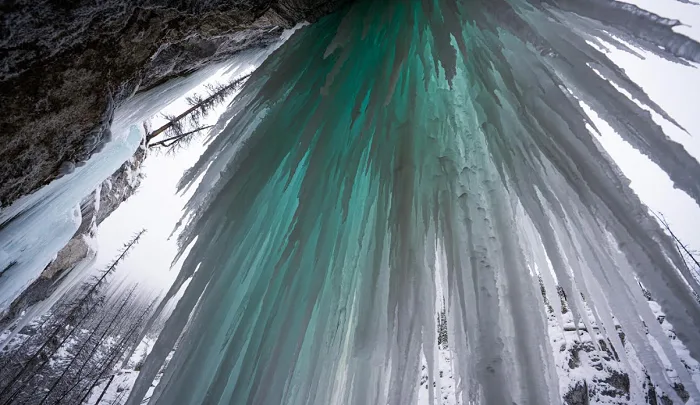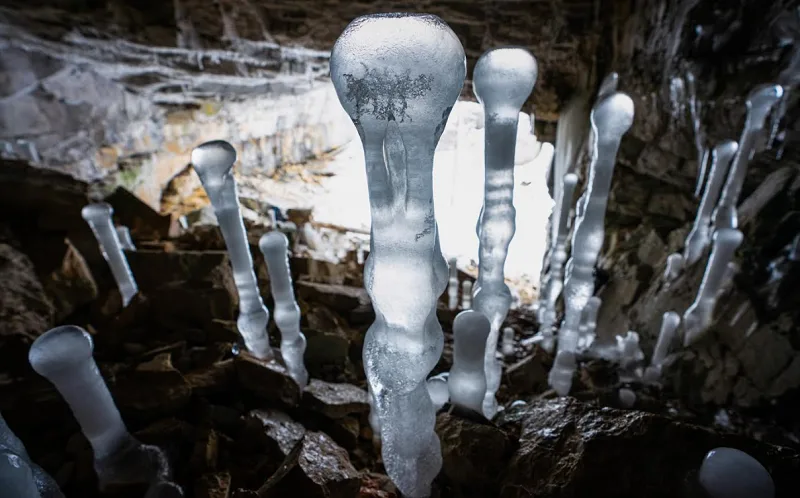
The science behind these 'alien-like' ice formations
Further up the creek, guarded by thick brush and rugged terrain, lies a cave. In it, a host of alien-like ice structures are growing.

Precariously perched atop broken rock, these upside-down icicles have encased in them the weather record that has nurtured their existence.
Of their many peculiarities, the ice forms from the ground up as a stalagmite. The warmer temperatures near the roof of the cave ensure that groundwater seepage drips freely from the rock above without freezing.

Colder periods show up as narrower segments a more rapid vertical growth, while warm periods allow for the formation of clear, bulbous shapes as liquid water flows further and freezes slower.
Frost crystals form on the tops of the icicles when it is particularly cold, which becomes coated in water, giving way to the entrapment of tiny air bubbles. These appear as segments of white.
Taller structures are not necessarily older -- they simply have more water feeding into them. But like tree rings on an accelerated scale, every fragile stalagmite that has not collapsed under its own weight tells the same story of the weather in its own way.










